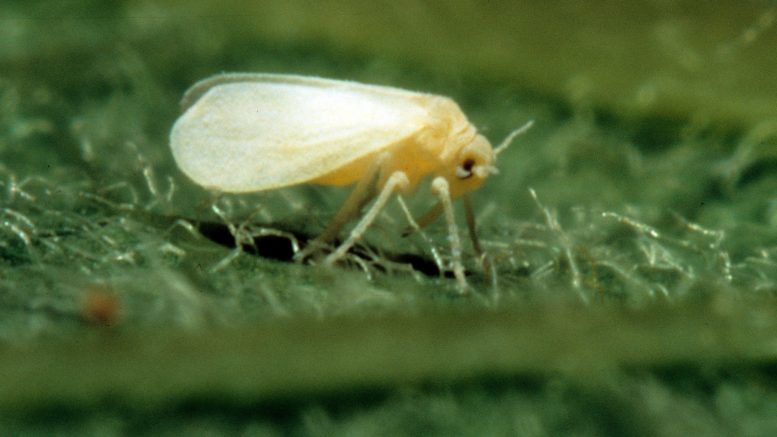“…teremos cultivares e híbridos com alto teto produtivo e baixa tolerância a danos e perdas estruturais vinculadas a insetos; uma diminuição do número de espécies alvo, mas estas em maiores populações nos diferentes cultivos da sucessão…”

Mauricio Pasini, professor no Instituto de Ciências Agronômicas
Mauricio Paulo Batistella Pasini é engenheiro agrônomo, mestre e doutor em agronomia pela Universidade Federal de Santa Maria. Atualmente, Pasini é consultor e pesquisador da Intagro Pesquisa e Desenvolvimento, e professor da área de manejo de insetos-praga pelo Instituto de Ciências Agronômicas, de Passo Fundo, Rio Grande do Sul.
O manejo integrado de insetos-praga vincula-se a diferentes estratégias que envolvem a sociedade, o ecossistema, a economia, tecnologias de controle e insetos, os quais passam a se tornar pragas ao adquirirem potencial de dano econômico.
Se o Manejo Integrado de Pragas (MIP) fosse empregado de maneira correta, de forma abrangente, mitigaria grande parte dos problemas fitossanitários. Porém, ao longo dos anos, o manejo de pragas passou a ser feito em partes, muito em função das variáveis vinculadas a parte econômica e desenvolvimento de ferramentas de amplo espectro de ação.
Em tese, a grande dificuldade do emprego das técnicas vinculadas ao MIP se dá pela calendarização das aplicações, parâmetros de tomada de decisão desatualizados, custo associado e vinculação de uso a outras ferramentas de manejo, como por exemplo, proteção contra doenças e plantas daninhas na cultura da soja.
Considerando também a evolução das tecnologias, é importante traçar um paralelo entre espécie cultivada, melhoramento genético, insetos associados e ferramentas de manejo. Na década de 90, embora ocorresse o uso de ferramentas químicas com amplo espectro de ação, havia um forte incentivo para o uso de ferramentas alternativas de controle, associadas a cultivares com menores potenciais produtivos, mas com capacidade de tolerar o ataque de insetos, como desfolha ou picadas com alimentação, além de possuir parâmetros estruturais que conferiam menor palatabilidade as plantas, como teor de lignina alto ou outros fatores antinutricionais. Também, o conceito de rotação de culturas passava a ser empregado mais facilmente com a argumentação da quebra do ciclo de insetos-praga.
Nos anos 2000, a rotação de cultivos se estabelece e o uso de ferramentas biológicas como Baculovírus anticarsia e produtos seletivos se perpetuam, passando estar associados às práticas do MIP. Contudo, embora houvessem ferramentas seletivas para complexo de lagartas e insetos sugadores como percevejos, as ferramentas efetivas continuam de amplo espectro de ação. Eesse período coincide com um grande salto na área cultivada de soja além da evolução do potencial produtivo com novas cultivares, desenvolvimento de híbridos com biotecnologia tendo como base a expressão de proteínas Bt (oriundas de Bacillus thurigiensis).
Na última década, obtivemos o desenvolvimento de biotecnologias como a piramidação de genes em híbridos de milho comerciais, plantas de soja com a expressão de proteínas Bt, aprimoramento de inseticidas biológicos em suas respectivas formulações, desenvolvimento de ferramentas químicas de controle através de misturas de ingredientes ativos e aumento da capacidade produtiva de híbridos e cultivares de soja. Contudo, com o aumento do potencial produtivo dos materiais, há um direcionamento da energia produzida pela planta para a reprodução, deixando assim, os materiais mais palatáveis e atrativos para insetos. Além disso, o conceito de que a rotação de culturas quebrava ciclo de insetos-praga passa a não valer, muito em função da adaptação de algumas espécies as diferentes culturas, como por exemplo: Spodoptera frugiperda, Diceraeus furcatus, D. melacanthus e grupos como o Tripes.
Para a próxima década, teremos cultivares e híbridos com alto teto produtivo e baixa tolerância a danos e perdas estruturais vinculadas a insetos; uma diminuição do número de espécies alvo, mas estas em maiores populações nos diferentes cultivos da sucessão, entre eles Tripes, Mosca-Branca, Spodoptera frugiperda, Percevejo barriga-verde, Cigarrinha do Milho e Chrisomelideos; a chegada de novos princípios ativos vinculados a ferramentas químicas, biotecnologias, ferramentas biológicas macro e micro, aprimoramento de formulações, além das tecnologias de informação e estatísticas vinculadas a tomada de decisão.
Contudo, estaremos ainda buscando promover a integração das praticas de manejo entre os cultivos na sucessão, trabalhando o sistema produtivo, manejo especializado e o resgate das ferramentas do MIP, com objetivo principal em manter as densidades de insetos baixa.
LEIA MAIS:

